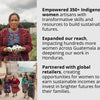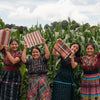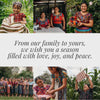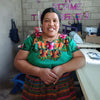5 things you didn’t know about Día de los Muertos
- by Molly Burns
Día de los Muertos (Day of the Dead) is a fusion of the Catholic holidays All Saints Day and All Souls Day and the ancient Aztec tradition Mictecacihuatl that was practiced for 3,000 years before Spanish Conquistadors landed in what is now present-day Mexico. The conquistadores made many unsuccessful attempts to extinguish the Aztec ritual, which was traditionally celebrated toward the beginning of August. Unable to extradite the deep tradition and history associated with this holiday, the Spaniards moved the celebration to coincide with All Saints Day and All Souls Day (held on November 1st and 2nd, respectively), and Día de los Muertos as we know it was born.
2. It’s a partyDía de los Muertos is a day to honor the dead, but the occasion is far from somber. Instead of mourning the passing of loved ones, the day celebrates the vibrancy of their lives. Parties, drinks, and food (lots of food), including skulls made out of sugar, are popular forms of celebration.

Sugar skulls, a Día de los Muertos tradition.
3. The bigger your kite, the betterIn Guatemala, Día de los Muertos is celebrated by the flying of giant, colorful kites, which are constructed for months in preparation of the day. Specifically, the towns of Sumpango and Santiago Sacatepéquez in the province of Sacatepéquez have embraced this tradition and receive visitors from all over Guatemala and the world to witness this magical display. The colorful kites are made out of bamboo and light tissue paper so they can fly with little wind and are released all at once, at dusk.

Día de los Muertos kite festival in Sumpango, Sacatequepez.
4. Meat Salad is the Signature DishIt wouldn’t be a holiday with delicious comida. Fiambre, a chilled dish typically comprised of different cheeses, vegetables, and cold cuts, is prepared and consumed for Día de los Muertos. Traditionally, families visit graves of their loved ones and bring the favorite dishes of the deceased. Fiambre was born out the mixing of dishes from multiple families who were gathered at the same cemetery. The salad can contain over 50 ingredients. Que rico!
5. OfrendasFamilies honor their loved ones by building altars or ofrendas (meaning offering in Spanish) leading up to November 1st, sometimes months in advance. Altars are typically decorated with candles, incense, photos of the deceased, sugar skulls, fresh fruit, and pan de muerto (bread of the dead), salt, which represents the continuance of life, and marigolds. (cempasuchitl) symbolize death, and are widely used in altars and other Día de los Muertos celebrations to guide spirits back.

Typical Ofrenda.
The designs of Mercado Global are continually influenced by the rich traditions of the country that we call home. Día de los Muertos is one of many special cultural celebrations that make Guatemala and its vibrancy so inspiring. Feliz Día de los Muertos!





